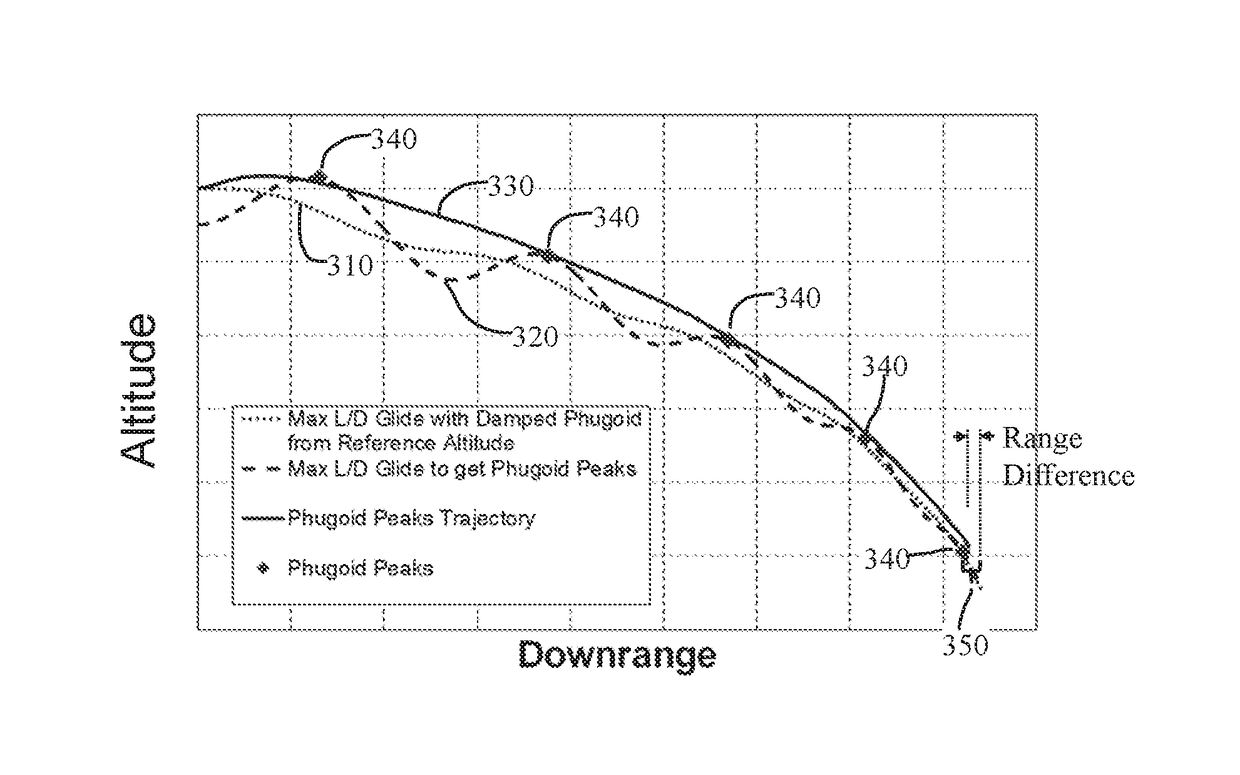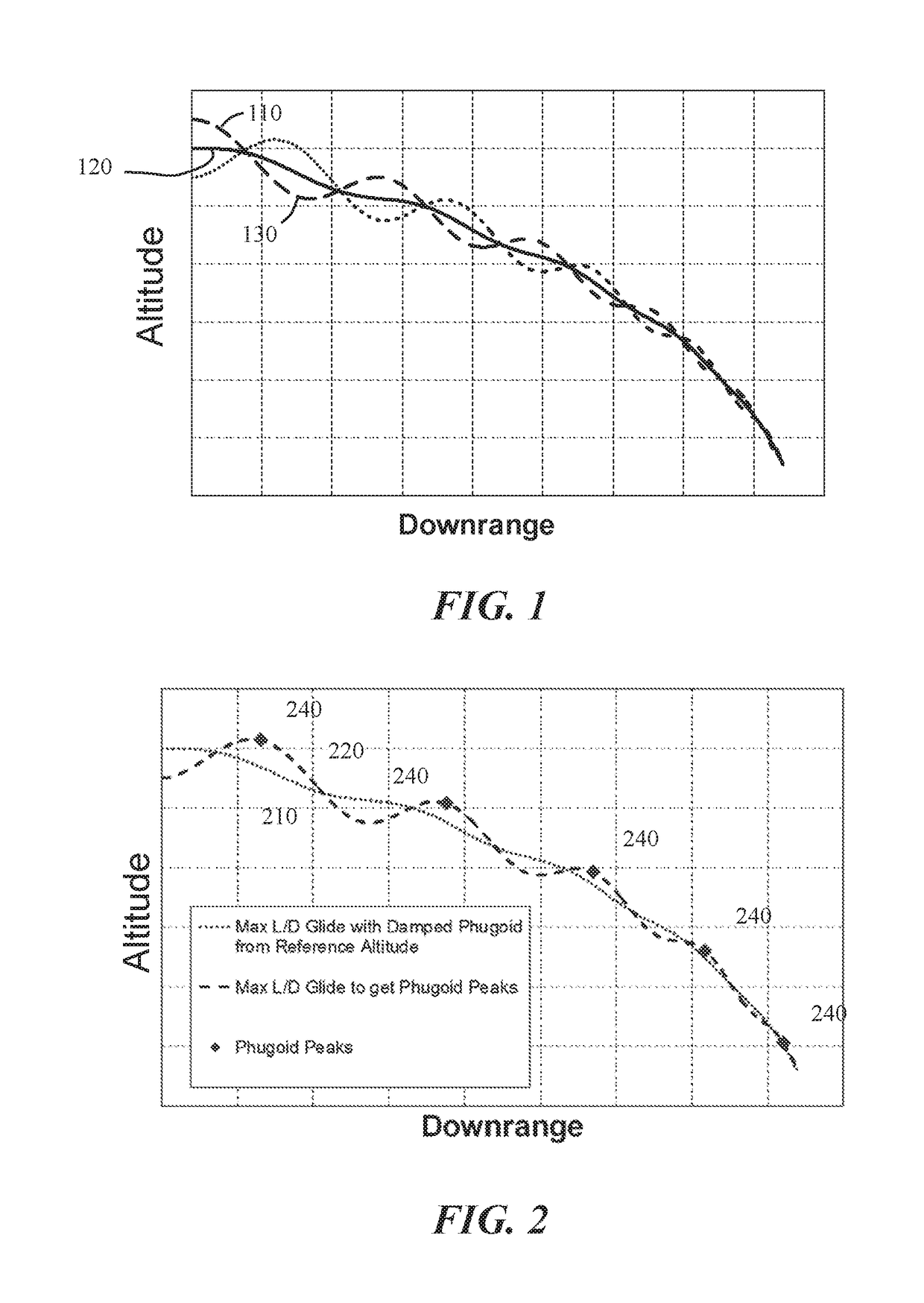Phugoid peaks trajectory for hypersonic glide vehicles
- Summary
- Abstract
- Description
- Claims
- Application Information
AI Technical Summary
Benefits of technology
Problems solved by technology
Method used
Image
Examples
example embodiment
[0045]The teachings of the present invention can be implemented by use of such industry standard trajectory tools as POST (Program to Optimize Simulated Trajectories II), originally written Lockheed Martin Astronautics and NASA-Langley; and, OTIS (Optimal Trajectories by Implicit Simulation), originally written by The Boeing Corporation with NASA-Glenn Research Center. The vehicle inputs to the trajectory tool are vehicle weight, aerodynamic reference area and wing loading.
[0046]A hypersonic trajectory starts at the same specific energy state and ends at the same specific energy state as defined by a reference altitude and velocity. Specific energy is the sum of potential and kinetic energy. POST utilizes the specific energy equation used for orbital mechanics shown in Eq. (1). This formula for energy is zero for a circular orbit. For simplicity, aerodynamics are assumed to be constant over all Mach numbers and trimmed.
[0047]e=VI22-μrI,Eq.(1)[0048]where[0049]μ=1.41×1016 ft3 / sec2 (E...
PUM
 Login to View More
Login to View More Abstract
Description
Claims
Application Information
 Login to View More
Login to View More - R&D
- Intellectual Property
- Life Sciences
- Materials
- Tech Scout
- Unparalleled Data Quality
- Higher Quality Content
- 60% Fewer Hallucinations
Browse by: Latest US Patents, China's latest patents, Technical Efficacy Thesaurus, Application Domain, Technology Topic, Popular Technical Reports.
© 2025 PatSnap. All rights reserved.Legal|Privacy policy|Modern Slavery Act Transparency Statement|Sitemap|About US| Contact US: help@patsnap.com



